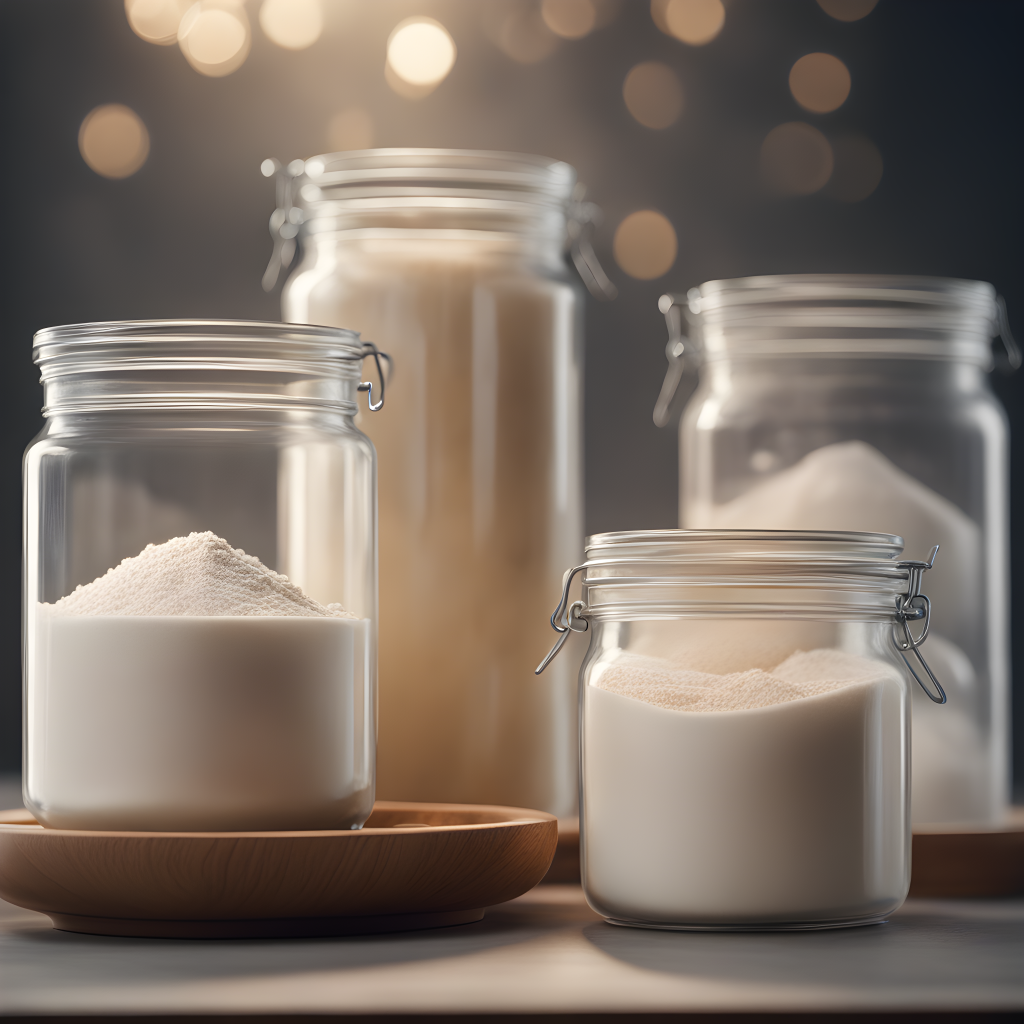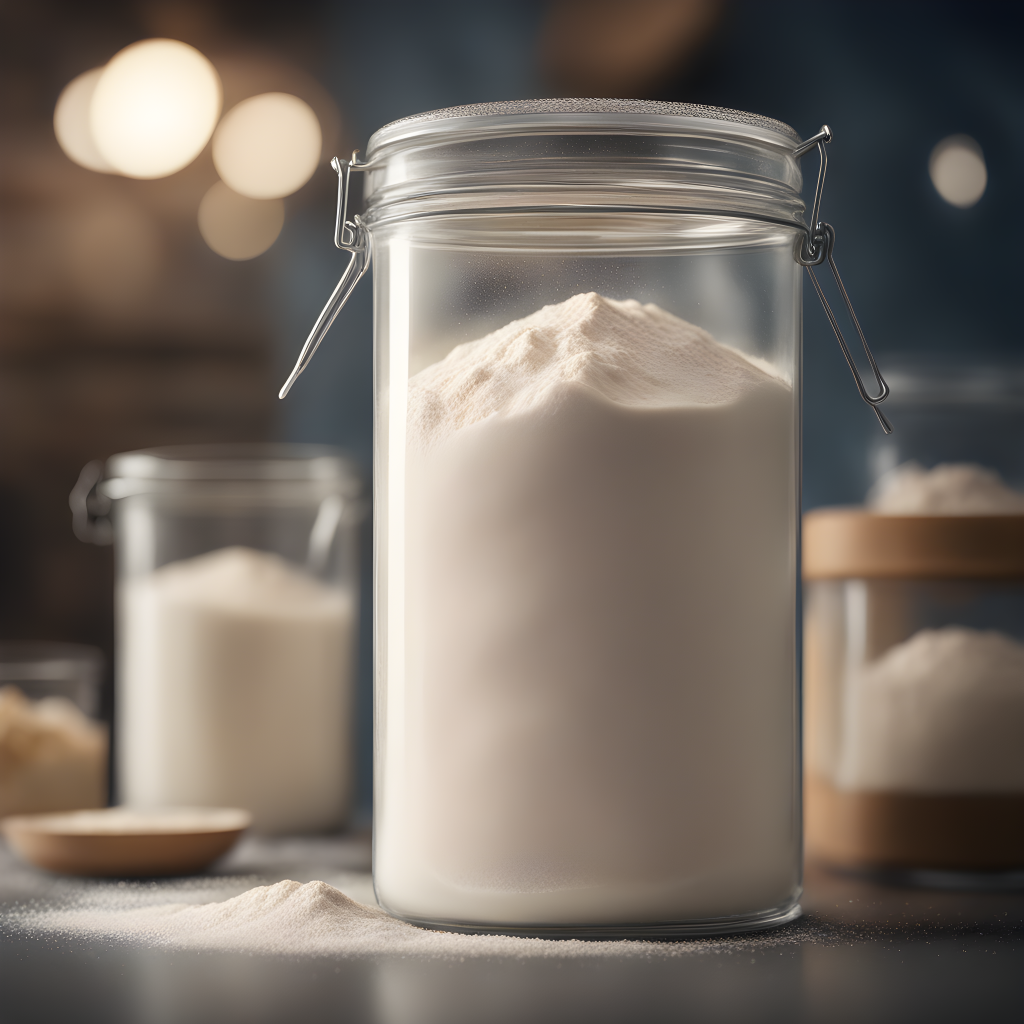How do you store flour for long term? Flour is a staple ingredient in many kitchens, used for baking delicious bread, cakes, and pastries. However, to ensure that your flour remains fresh and usable for an extended period, it’s essential to store it properly. In this comprehensive guide, we will explore the best practices for storing flour for the long term. Whether you’re a seasoned baker or just someone who wants to keep their flour fresh, this article is for you. Also, check my latest post on How to Store Flour in the Pantry.
How Do You Store Flour for Long Term?
To store flour long-term, choose an airtight container like a glass jar or food-grade plastic container. Ensure the container is clean and dry before transferring the flour. Keep the flour in a cool, consistent temperature environment, ideally between 50°F and 70°F (10°C to 21°C), away from heat sources. Label the container with the type of flour and purchase date for easy tracking, and always perform a freshness check before using it.

1. Choosing the Right Container
When it comes to long-term flour storage, the choice of container is crucial. Opt for an airtight container that seals tightly. Mason jars, food-grade plastic containers, and metal canisters with rubber gaskets are all excellent options. Make sure the container is clean and dry before transferring the flour.
2. The Role of Temperature
Flour stays fresh longer when stored at a consistent, cool temperature. Ideally, aim for a storage temperature between 50°F and 70°F (10°C to 21°C). Avoid storing flour near heat sources like stoves or ovens, as temperature fluctuations can lead to spoilage.
3. Keep It Dry
Moisture is the enemy of flour. Even a small amount of moisture can cause flour to clump and spoil. To prevent this, store flour in a dry environment. If you live in a humid area, consider using food-grade desiccant packs in your storage container.
4. Avoid Exposure to Light
Light can also affect the quality of flour. UV rays from sunlight can cause flour to deteriorate and develop an off-flavor. Store flour in a dark pantry or cabinet to shield it from light exposure.
5. Pantry Raider’s Pro Tips
At Pantry Raider, we’re all about optimizing your pantry. Here are some expert tips:
- Rotate Your Stock: Use older flour first to ensure you always have fresh supplies.
- Buy in Bulk: Purchase flour in larger quantities to save money, but be sure to store it properly.
- Consider Glass Containers: Glass containers are airtight and allow you to see the flour inside, making it easier to check for freshness.
6. The Importance of Labeling
Label your flour containers with the flour type and the purchase date. This simple step helps you keep track of your inventory and ensures you use the oldest flour first.
7. Checking for Freshness
Before using stored flour, perform a simple freshness check. Smell the flour – it should have a mild, neutral scent. If it smells rancid or off, it’s time to discard it. Additionally, check for any signs of pests or moisture.
8. Using Vacuum Sealers
For ultimate freshness, consider investing in a vacuum sealer. These devices remove air from the storage container, preventing oxidation and extending the shelf life of your flour.
9. Freezing Flour
If you anticipate not using flour for an extended period, freezing it is an option. Place the flour in an airtight bag or container, remove as much air as possible, and freeze it. When ready to use, allow it to come to room temperature before baking.
10. Storing Specialty Flours
Specialty flours, like almond or coconut flour, require different storage. Follow the manufacturer’s recommendations for these flours to ensure their longevity.

FAQs
Can I store flour in its original paper bag?
It’s best to transfer flour to an airtight container, as paper bags are not effective at keeping out moisture and pests.
How long can I store flour?
All-purpose flour can be stored for up to 6-8 months in ideal conditions, while whole wheat flour has a shorter shelf life of 4-6 months.
Should I store flour in the refrigerator?
No, the refrigerator can introduce moisture to the flour, which is detrimental to its quality.
Can I use expired flour?
It’s not recommended, as expired flour may have an off taste and can affect the quality of your baked goods.
What should I do if I find pests in my flour?
Discard the affected flour, clean your storage container thoroughly, and consider using pest deterrents in your pantry.
Can I store flour in plastic bags?
Yes, but while this is not ideal, you can use plastic bags if they are airtight. Double-bagging can provide an extra layer of protection.
Conclusion
In conclusion, how do you store flour for long term? Properly storing flour long-term is essential for maintaining its quality and ensuring your baked goods turn out delicious every time. By choosing the right container, controlling temperature and moisture, and following our expert tips, you can enjoy the benefits of fresh flour in your pantry. For more pantry optimization tips, check out other articles on Pantry Raider.

